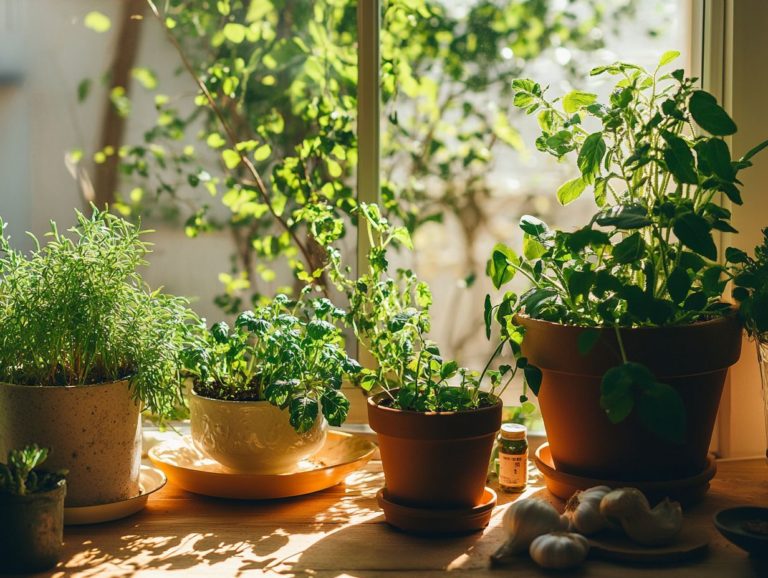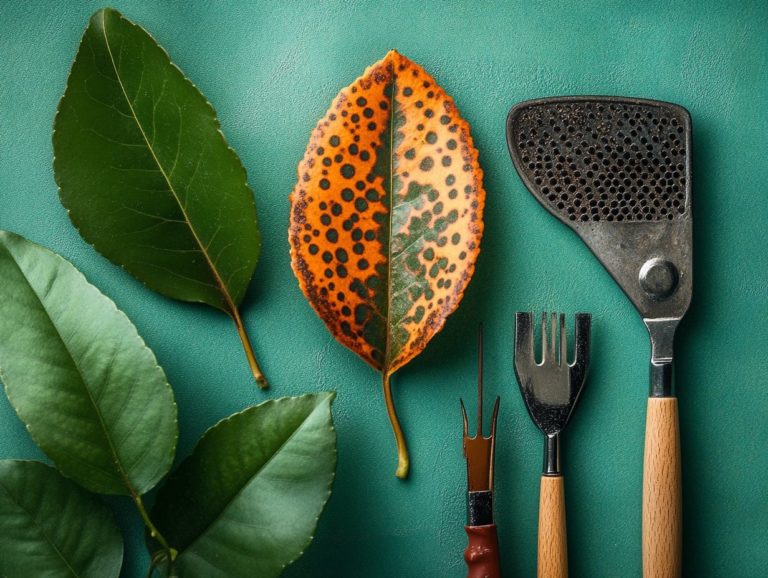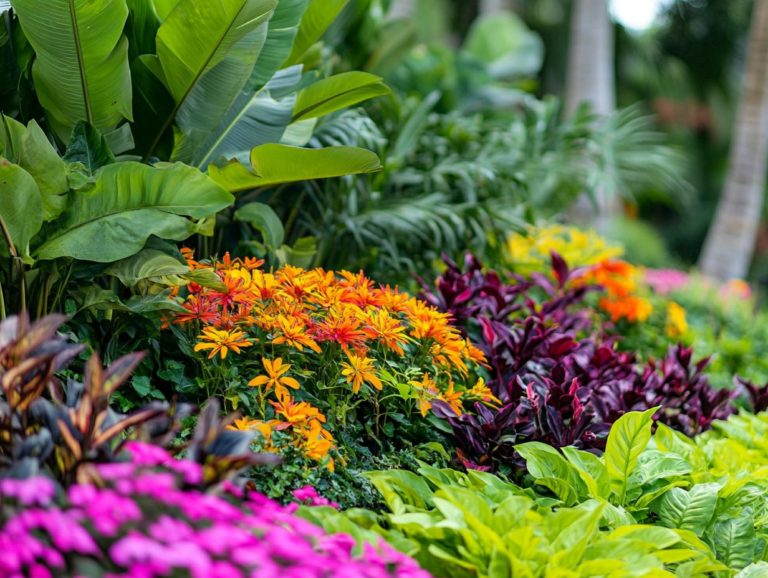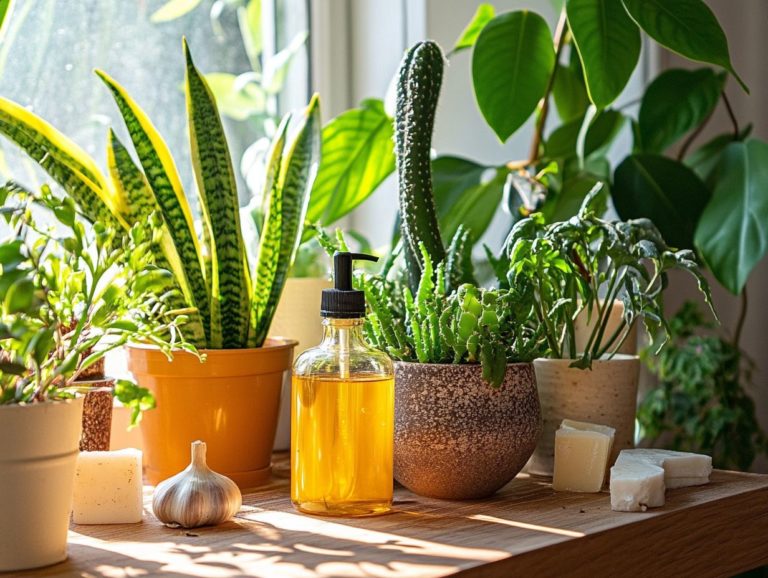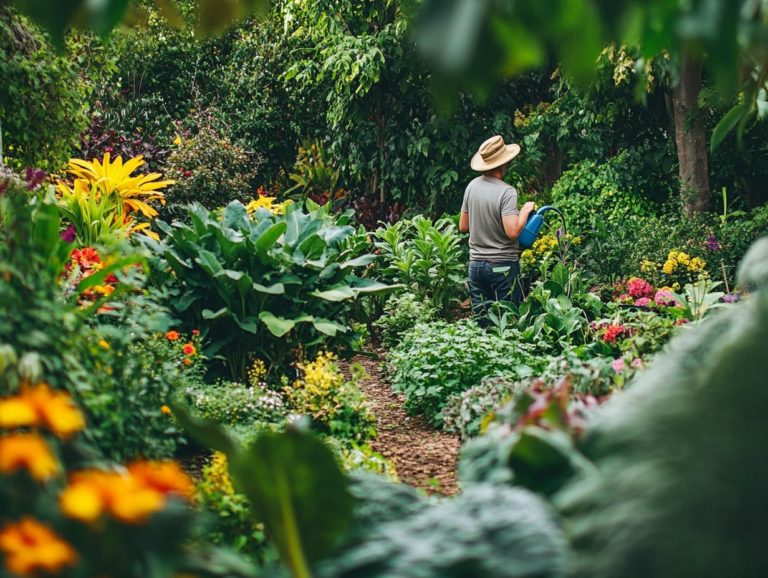How to Handle New Plants Without Spreading Pests
Bringing new plants into your home is an exciting way to enhance your space, but it s important to be aware of potential pests that might sneak in along for the ride.
Before welcoming your new green companions, take key steps to identify common pests and put preventive measures in place. Quarantining new arrivals is crucial for ensuring the safety of your existing plants.
Let s explore effective treatments for infestations and offer tips on keeping your tools and containers free from pests. Get ready to enjoy your new plants without a worry in the world!
Contents
Key Takeaways:
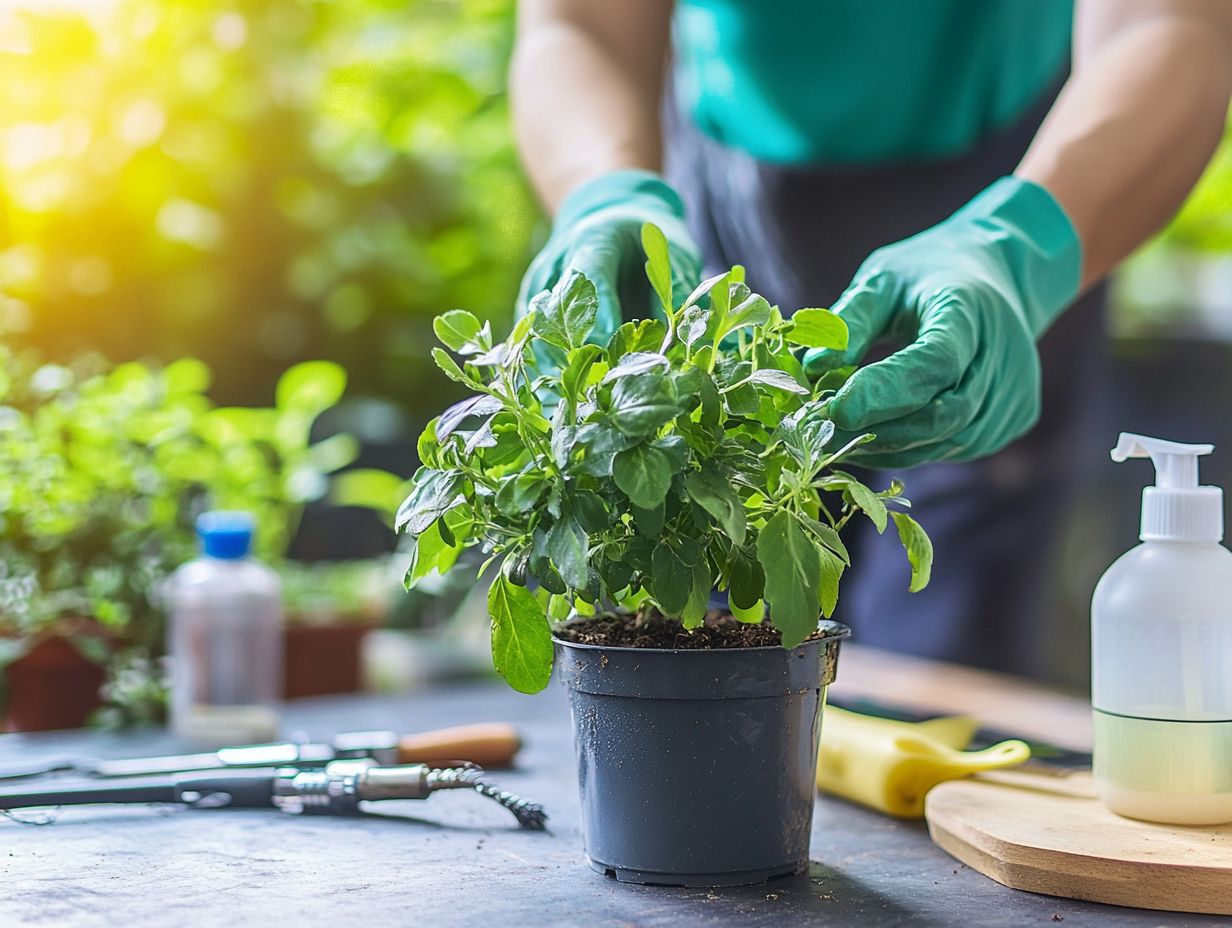
- Inspect new plants before bringing them into your home to prevent introducing pests.
- Quarantine new plants for 2-3 weeks to monitor for any signs of infestation before introducing them to your other plants.
- Use natural methods, such as neem oil or insecticidal soap, to treat infested plants. Regularly clean and disinfect tools and containers to prevent the spread of pests.
What to Do Before Bringing New Plants Home
Before you bring new plants home, it s important to develop good habits for the overall well-being of your indoor greenery. This means learning each plant s specific requirements and thoroughly inspecting potential additions to your space.
By implementing these practices, you can significantly reduce the risk of pest infestations and create a thriving green oasis in your home.
Begin by checking for any signs of pests, such as tiny holes in leaves or webbing that could indicate trouble. Consider the watering and lighting needs of various plant species; understanding that some flourish in direct sunlight while others prefer shade is crucial for their survival.
Establish a routine for regularly cleaning the leaves, as dust buildup can hinder their ability to photosynthesize effectively. By being proactive, you ll create an ideal environment where your plants can thrive, enhancing both your decor and overall well-being.
Identifying and Preventing Pests
Identifying and preventing pests is crucial for maintaining the health of your indoor plants and avoiding a pest infestation that could severely impact their vitality.
Regularly inspect for signs of pests like mealybugs, spider mites, and fungus gnats. This proactive approach allows for timely interventions, fostering an environment where your plants can thrive free from unwanted invaders.
Common Types of Pests and How to Spot Them
Common plant pests, such as mealybugs, spider mites, and fungus gnats, each have distinct signs that reveal their presence. For example, mealybugs appear as small, white cottony masses. In contrast, spider mites create fine webbing on leaves, while fungus gnats can often be seen hovering near the soil surface.
Understanding the unique characteristics of these pests is essential for effective management. Mealybugs, resembling tiny fluffy white spots, tend to cluster in hidden areas like leaf joints or stems. Their sap-feeding habits can leave your plants looking weak or yellow.
Spider mites are nearly invisible but may display a pale or reddish hue when populations explode. The fine webs they weave clearly indicate an infestation.
Fungus gnats, on the other hand, are delicate, dark flies that hover around moist soil, signaling potential overwatering. By keeping an eye out for these telltale signs, you can ensure your plants remain vibrant and healthy.
Start applying these tips today and keep your plants happy and healthy!
Preventive Measures for Pests
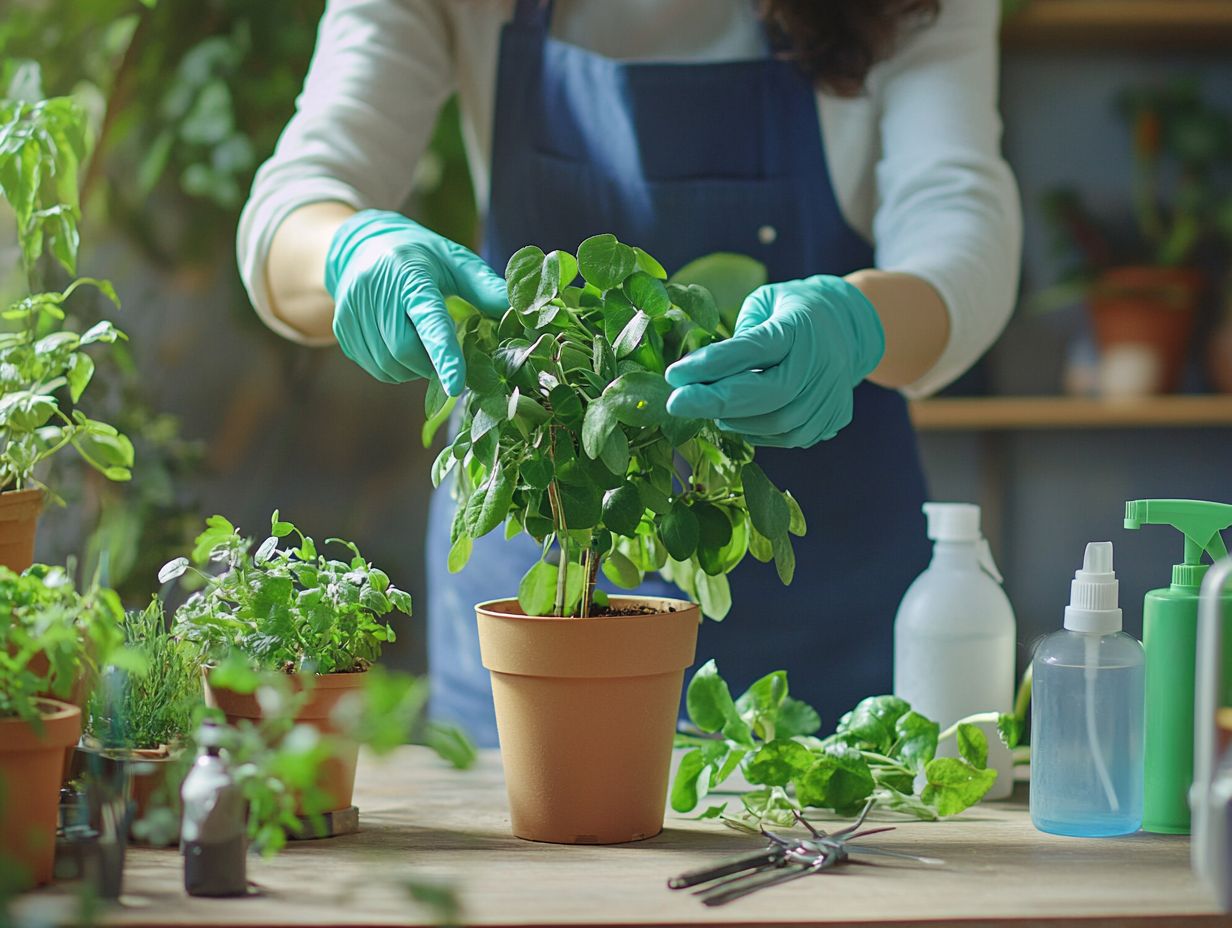
To prevent pests, adopt healthy habits. Quarantine new plants and inspect them before adding them to your indoor garden.
Keep a consistent watering schedule and clean regularly. These steps will significantly reduce the chance of a pest infestation.
Good soil health is vital for robust plant growth. A rich, nutrient-filled substrate helps plants resist pests.
Add organic matter and change the types of plants you grow in a space over time to improve soil quality.
Proper air circulation and humidity levels are also important. Use fans and humidifiers to discourage pests.
Monitor your plants closely. Early detection allows for swift action before infestations occur.
By integrating these strategies, you can create a thriving ecosystem that minimizes pest risks.
Quarantining New Plants
Quarantining new plants is crucial for your indoor garden’s health. This practice helps you spot pests and diseases before they spread.
Isolate new plants for about two weeks. This gives you time to observe them while they acclimate to your home.
Why and How to Quarantine New Plants
Quarantining new plants protects your existing collection. It allows for thorough inspection of newcomers for hidden pests or diseases.
Choose a well-lit area away from your other plants. This spot should have some airflow but limit contact to avoid pest transfer.
During quarantine, inspect each plant closely. Look for signs like webbing, discolored leaves, or sticky residue that may indicate pests.
Ensure they receive the right amount of water and light. Avoid harsh sunlight, and be ready to address any issues that arise.
Treating Infested Plants
When treating infested plants, timely action is key. Quick responses help protect your thriving plants from pests.
Effective solutions include hydrogen peroxide and diatomaceous earth. These options can eliminate common pests while keeping your plants healthy.
Methods for Removing Pests from Plants
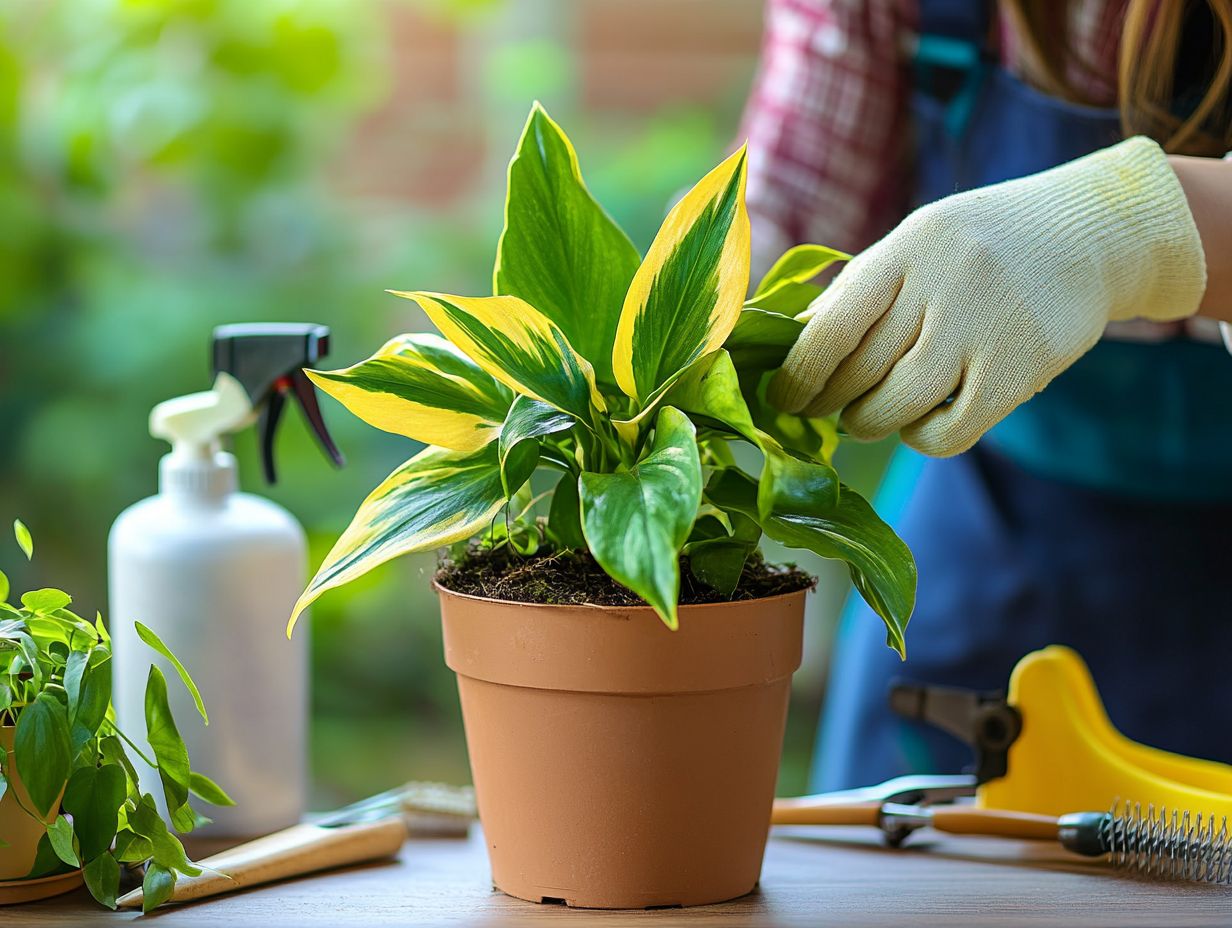
There are several effective methods for eliminating pests from your plants. One method involves using hydrogen peroxide to tackle fungal infections, while another uses diatomaceous earth to ward off crawling nuisances like millipedes and mealybugs. These organic treatments help you address various pest issues while minimizing harm to your cherished plants.
When opting for hydrogen peroxide, prepare a diluted solution by blending one part hydrogen peroxide with four parts water. Apply this mixture directly to the affected areas of your plant, ensuring you cover every nook and cranny. Repeat this treatment every seven to ten days until the infection is under control.
Next, sprinkle diatomaceous earth around the base of your plants. This creates a protective barrier that crawling pests find challenging to cross. Be sure to reapply it every couple of weeks, especially after rain or watering, to maintain its effectiveness.
To evaluate the success of these methods, regularly inspect your plants for signs of recovery or lingering pest activity. Adjust your approach as needed to ensure your plants remain in optimal health.
Cleaning and Disinfecting Tools and Containers
Keep your tools and containers sparkling clean to protect your plants! Cleaning and disinfecting them is essential for preventing pest infestations and cultivating healthy habits as an indoor plant enthusiast.
By incorporating regular cleaning into your routine, you not only eliminate potential pest remnants but also ensure that your gardening tools and containers are safe and optimal for your plants growth.
Ensuring Pests are not Spread Through Tools and Containers
Prevent pests from hitching a ride on your tools and containers with a meticulous approach to cleaning. These items can harbor pests and diseases, so regular cleaning is crucial to minimize the risk of infestations and create a healthier environment for your indoor plants.
Make it a habit to clean your tools after each use, especially if you’ve worked with infested plants. A mixture of warm, soapy water works wonders for removing soil and debris. Use a diluted bleach solution, which is a mixture of bleach and water that kills germs, or a reliable commercial disinfectant to effectively eliminate pathogens. Soak your tools in this solution for at least 10 minutes before rinsing them thoroughly.
For your containers, wipe them down with isopropyl alcohol to ensure they’re free from harmful residues. By sticking to this routine, you’re not just nurturing your plants; you’re also crafting a more enjoyable gardening experience, free from the hassle of unnecessary outbreaks.
Frequently Asked Questions
What does it mean to handle new plants without spreading pests?
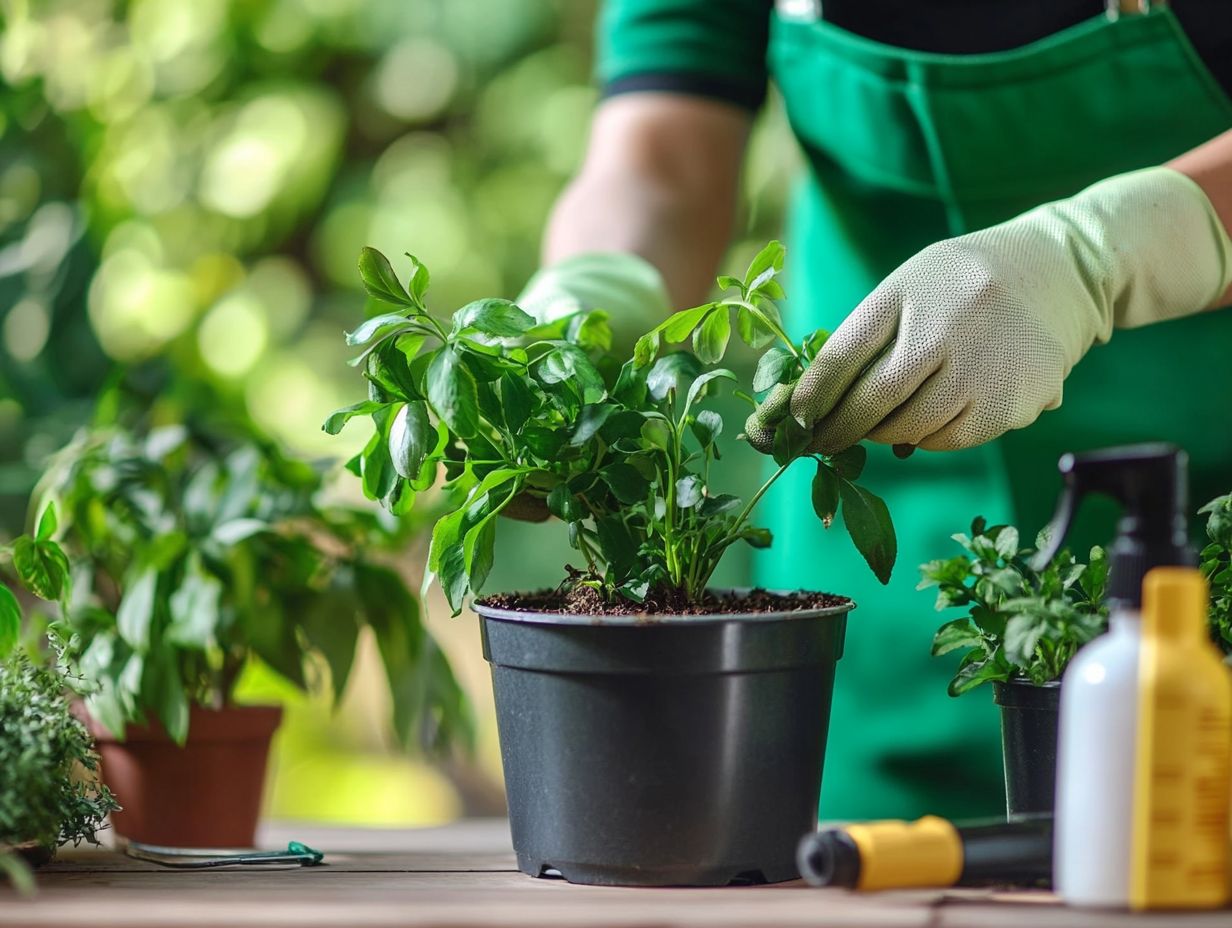
Handling new plants without spreading pests means safely bringing new plants into your garden or home without introducing harmful pests or diseases that could harm your existing plants.
Why is it important to handle new plants without spreading pests?
It’s important to handle new plants without spreading pests because they can damage your plants, spread diseases, and infest your entire garden or home. Preventing pest spread saves you time, money, and effort in the long run.
What are some common pests that can be spread through new plants?
Common pests that can be spread through new plants include aphids, mealybugs, spider mites, thrips, and whiteflies. These pests can quickly reproduce and infest your entire garden if not handled properly.
How can I inspect new plants for pests before bringing them home?
Before purchasing or bringing home new plants, carefully inspect them for signs of pests. Look for visible pests or signs of damage such as holes in leaves, sticky residue, or distorted leaves. Also, check the soil and roots for any signs of pest activity.
What steps can I take to prevent spreading pests when bringing in new plants?
Excited to add new plants? Let s keep them healthy! Start by keeping the new plants away from others for a while.
Repot them in fresh soil. Regularly check for any signs of pests.
You can treat the plants with natural pest control methods. For example, neem oil is a natural oil that helps control pests.
What should I do if I discover pests on my new plants?
If you find pests, isolate the affected plants right away. This helps stop the infestation from spreading.
Use natural or chemical pest control methods to treat the plants. In some cases, it might be best to dispose of heavily infested plants to protect your garden.

